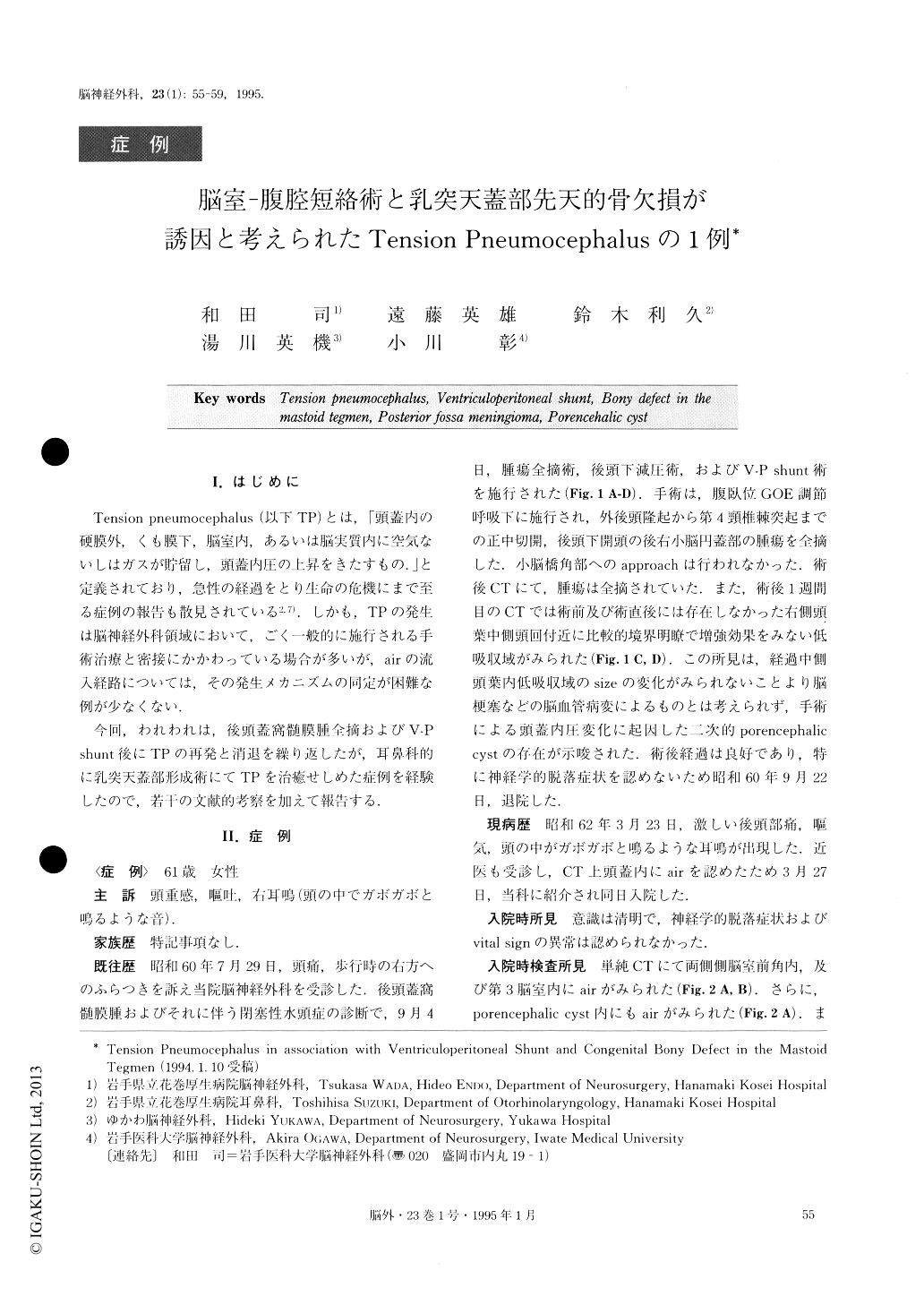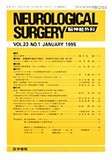Japanese
English
- 有料閲覧
- Abstract 文献概要
- 1ページ目 Look Inside
I.はじめに
Tension pneumocephalus(以下TP)とは,「頭蓋内の硬膜外,くも膜下,脳室内,あるいは脳実質内に空気ないしはガスが貯留し,頭蓋内圧の上昇をきたすもの.」と定義されており,急性の経過をとり生命の危機にまで至る症例の報告も散見されている2,7).しかも,TPの発生は脳神経外科領域において,ごく一般的に施行される手術治療と密接にかかわっている場合が多いが,airの流入経路については,その発生メカニズムの同定が困難な例が少なくない.
今回,われわれは,後頭蓋窩髄膜腫全摘およびV-P shunt後にTPの再発と消退を繰り返したが,耳鼻科的に乳突天蓋部形成術にてTPを治癒せしめた症例を経験したので,若干の文献的考察を加えて報告する.
The authors report a case of tension pneumocephalus in association with a congenital bony defect at the mas-toid tegmen, and a ventriculoperitoneal (V-P) shunt for obstructive hydrocephalus, due to the presence of a posterior fossa meningioma. After multiple diagnosis and surgical procedures, congenital bony defect at the right mastoid tegmen demonstrated by a middle ear cavity computerized tomography (CT) scan, was identi-fied as the source for entry of the air. The air must have penetrated the lateral ventricle through a porencephalic cyst in the right temporal lobe. Recon-struction of the bony defect in the mastoid tegmen suc-cessfully prevented further recurrence of tension penu-mocephalus. We discussed the possible pathogenic mechanismsinvolved in this kind of tension pneumocephalus, and suggested that a middle ear cav-ity CT scan should he performed for tension pneumoce-phalus that has developed after V-P shunt.

Copyright © 1995, Igaku-Shoin Ltd. All rights reserved.


